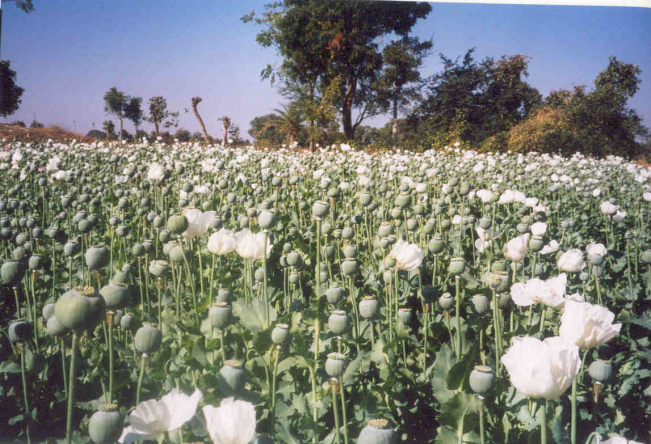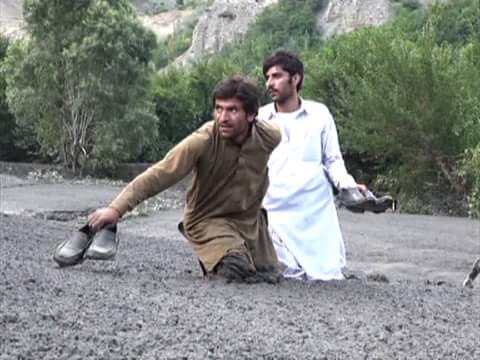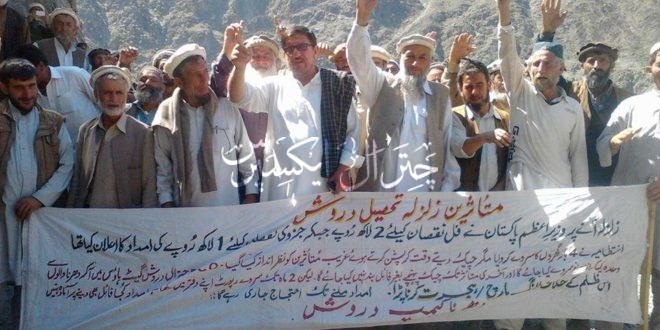Chitral to Afghanistan, while hundreds of disaster victims
Month: April 2016
The impossible choice for the disaster victims in Chitral. — Centre for Disaster Risk and Climate Change (CDRC)
Disaster victim threatening to migrate to Afghanistan. Injustice, corruption, lack of accountability and transparency in disaster compensation, recovery and reconstruction work in Chitral-Pakistan compelled to migrate over 400 disaster affected families in Drosh city Chitral to Afghanistan, while hundreds of disaster victims in Breap village Mastuj are protesting to re-start poppy cultivation in their villages. […]
The impossible choice for the disaster victims in Chitral.

Disaster victim threatening to migrate to Afghanistan.
Injustice, corruption, lack of accountability and transparency in disaster compensation, recovery and reconstruction work in Chitral-Pakistan compelled to migrate over 400 disaster affected families in Drosh city Chitral to Afghanistan, while hundreds of disaster victims in Breap village Mastuj are protesting to re-start poppy cultivation in their villages. Hundreds of families in Reshun village are expressing their serious concerned about the corruption in the channelization work in reshun gol stream that is exposing the entire village to flooding. Hundreds of women, children and patients in Chitral town are voicing about the failure of the government to re-construct the very basic pedestrian bridges at Chitral Gol at Goldur and Muldeh ( closed to the office of District Administration, District Nazim at the Head Quarter of District Chitral) used by women, children and patients to go to hospital, school and colleges. Local Government public representatives are speaking about the poor quality of Garumchashma Road re- construction.

Road leading to wakhan corridor in Burughul Chitral.
Chitral is highly exposed to multifaceted disasters and climate change. During 2015, it hit by flash flood land sliding and earthquake. The unprecedented torrential rains and the 7+ major earthquake killed over 80 people and same number of casualties. 75% of the people of Chitral affected with these two major events and 20,000 families lost their houses in addition to damages of numerous moveable and immovable properties. The critical infrastructure, including road network, bridges, irrigation channels, drinking water supply line, electricity power units and distribution line, standing crops, thousands of cattle, fruit bearing trees, schools, health units, religious centers, micro-enterprises and irrigation land heavy destroyed. The landlocked disaster completely paralyzed, and half million people got stranded within their village without access to health facilities, lifesaving drugs and essential supply chain of daily needs over two months. In addition to physical and material losses, the people are struggling with upsetting emotional and psychological trauma, frightening memories, the sense of constant danger, feeling numb, disconnected, and unable to trust other at the result of extraordinarily stressful events that shatter their sense of security, making them feel helpless. However, it took a while to get over the pain and feeling safe again. But the failure of the concerned agencies at the district level to give the required support promised by federal and provincial government adding extra pain, frustration and deprivation among the already affected fragile mountain communities in Chitral.

Breap community threaten to restart poppy cultivation-Mastuj Chitral
The federal and provincial governments’ response was positive and timely. The Prime Minster of Pakistan twice and the Chief Minister of the Province visited the disaster hit district, announced their discretionary relief fund. However, the disaster response could not be activated by the civil government, and the Pakistan Army took over the situation on the request of Provincial government to cope with the emergency response and early restoration of the road communication. Pakistan Army engaged and involved local community in restoration and recovery program and restored road communication network within two-three months and relief work stated.
Business as usual, lack of coordination and collaboration among the stakeholders, the dependency syndrome promoted by government and NGOs through un-necessary provision of relief goods on like and dislike as well as on political and relationship basis.
Surprisingly the mandatory specialized organizations like PaRRSA and ERRA were not involved in the rehabilitation and reconstruction of Chitral, rather the non- technical and nonprofessionals line departments and NGOs officials carried out the very important and critical rehabilitation and reconstruction work in Chitral. If, you are interested to know about our views and suggestions, please do visit our blog at https://cdrcblog.wordpress.com this author showed their concerned from the beginning, requested to national and international organizations for early recovery work, rather concentrating on relief provision by ensuring resilience building of the communities. Sad surprisingly some of the resilience building organization also heavy engaged and involved in the most interesting business of relief provision, promoting dependency syndrome among the communities against their mandate. The people are perpetually in shocked and frustration about a year, but their grievances are not considered at any level.

Road condition in Chitral after about one year.
Unfortunately the frustration reached to the level that over 400 affected families are planning to migrate to Afghanistan ( shame for all of us) hundreds of people, including children and women are agitating at Break Mastuj against the failure of the government to give relief and compensation to their houses, and similarly hundreds of people in Reshun gul expressing their insecurity with the poor channelization work undertaken by the irrigation department that is exposing the rest of the reshun village to the emerging flooding. There might be many reasons, but our research through interaction with the communities, our technical assessment of the ongoing relief and reconstruction work and the public opinion on the press and media are some of the indicators to learn from our mistakes and urgently need to discuss the present issues that might be led to secondary disasters for the people of Chitral and create a national security issue.

Predestrain bridges used by female and children for schooling and hospitals.
Recommendation:
1 To ensure accountability and transparency in provision of relief and rehabilitation and reconstruction work
2 To reassess the disaster damages and needs and compensated the genuine affectees.
3 To ensure risk management in the relief and reconstruction of infrastructure and making sure that the emerging floods and earthquake of the last intensity/size will not damage the reconstructed infrastructure.
4 An undertaking from the head of departments and organizations be undertaken why not action be taken against in case of destruction of the reconstructed infrastructure.
5 A technical units of PaRRSA or ERRA be established at Chitral to oversee the overall reconstruction work.
6 JAD Foundation is ready to supplement the efforts of district government and NGOs through provision of technical inputs about risk management in overall rehabilitation and reconstruction work in Chitral to both district government and NGOs through our sister organization CDRC.
Watch Robert Glasser’s video address on Youtube at GNDR Summit at Bangkok
The UN Special Representative of the Secretary-General for Disaster Risk Reduction, Robert Glasser addressed all GNDR members via video at their Global Summit held in Bangkok (April 19th-21st). Mr Glasser reminded us that civil society is stronger when working together and highlighted the essential roles ahead to be played by civil society during the implementation of the Sendai Framework for Disaster Risk Reduction (SFDRR).
Climate Change and its impact on our present and future generation
Planet X (3): NASA confirm NEMESIS (PLANET X ‘s Evil Sun)! END TIMES Catastrophe!
Disaster victims threatened to restart poppy cultivation and showed serious concerns about recovery program
Reconstruction is a process and approach based on “build-back-better” to avoid future flood destruction and ensure resilience building. However, Pakistan in general and Chitral in particular this approach is “build-back-weaker” business as usual.The huge funding provided by provincial and federal governments for early recovery and reconstruction of flood and earthquake destruction,2015 is blessed funds for the incompetent and transitional officials of the line department and local government agencies. Surprisingly the executing agencies are neither aware about the project risk management, nor the technical competencies of reconstruction parameters. They are not ready to respect to the indigenous knowledge of the local wisdom. They are blessed, they are the executors, they not accountable to public or the accountability process. The recent events in Chitral are some of such example of the organizational capacity and governance issues, exposing the people to disasters and destruction.
The residents of Brep village in Tehsil Mastuj, Chitral district have announced to launch a protest campaign over the government failure to provide compensation to the earthquake and flood affectees of 2015. The residents, including women and children, staged a protest rally and alleged the government on their failure to provide relief to the flood and earthquake affectees, who lost their houses and community structure, including irrigation channels and local roads in the area. The residents asked the government to provide compensation to the affected families and requested the Prime Minister Nawaz Sharif to direct relevant authorities to release cheques to the affected farmers. They also warned of launching a protest campaign and restarting of cultivating poppy to cope with the disaster losses.
Residents of Reshun village shown serious concerned about the ongoing poor quality of channelization work in the Reshun gol stream. The stream was clogged with heavy sedimentation carried by the flooding during 2010, 2013 and 2015. To protect the habitats of Reshum village from the flood risk, government provided 400 million funding to remove the boulders and rocks deposited in the stream could not be removed, the reason best known by the contractor and implementing agencies. The flood devastation 2015, including destruction of 4.5 MW electricity power Unit could be easily be avoided, if the funds were properly used and the channelization work was property undertaken in 2010 and 2013. The villagers shown their serious concerned with the current channelization work the Reshun village is highly exposed to future flood destruction.
The villagers and their leaders alleged that Irrigation department in collaboration of contractor minting money out of the recovery funding is blessing for corrupt mafia.
http://chitraltimes.com/udetail16/chitral_news-16-807.htm
We recommend Buffer Zoning – at least 50 feet should be left between streams and all land disturbing activities. These areas act as filter strips to keep sediment out of streams and keep stream banks stable. In addition, these areas provide excellent food, cover and travel ways for wildlife.
We at CDRC raised our concerned about the use of multi-billion recovery funding at the hand of non technical officials without project risk assessment and appropriate monitoring and evaluation system. We were very much concerned about the transitional engineering work that doesn’t meet the criteria of risk management and reconstruction parameter to ensure sustainable development. We agreed with the district administration on assurance that all necessary monitoring and evaluation system have been developed and will be implemented.
Building Resilience by Learning.


Major earthquake 7.1 magnitude struck Pakistan
According to the Meteorological Department of Pakistan, 7.1 magnitude earthquake near Ashkāsham, Afghanistan in the Hindukush range, struck Pakistan at 15:29 PST today April 10, 2016. The earthquake at the epicenter recorded at the depth of 210 km. This is the 4th earthquake within one week, and 13 within one month. During one year 276 earthquakes between 6.6. and 7.5 magnitude, have been recorded, according the to the USGS.
The unprecedented earthquake in the region is serious concerned for the people of Chitral in particular and the mountain region in general.
Similarly, an earthquake of magnitude 7.5 struck Pakistan on October 26, 2015 with its epicenter recorded at 45 kilometers north of Alaqahdari-ye Kiran wa Munjan, Afghanistan at a depth of 212.5 kilometers which jolted major parts of the country. By October 29, thirteen aftershocks were reported of magnitude 4.1. The earthquake killed at least 280 people and left 194 injured in Pakistan alone. In Afghanistan, more than 115 people were killed.
People in Chitral are asking whether the government is prepared for a massive Earthquake this year?. Chitral is in the red zone of earthquake and most of the human habitat ion is within the dominion of the fault line.
Climate change and its impacts on lives and livelihood of the mountain communities in Norther Pakistan.
71 precious lives perished under the heavy boulders and debris of rock fall and landslides, and over 50 people are seriously injured. Four foreign women tourists are still missing along with their …
Climate change and its impacts on lives and livelihood of the mountain communities in Norther Pakistan.
- 71 precious lives perished under the heavy boulders and debris of rock fall and landslides, and over 50 people are seriously injured. Four foreign women tourists are still missing along with their driver on way back from Hunza to Islamabad between Chillas and Kohistan on KKH.
- According to the National Disaster Management Authority, 48 people died in KPK, 15 in Gilgit and Baltistan, 8 people in AJK and 40 people got serious injuries in KPK, 07 in GB and 07 in AJK respectively during the three days torrential rains between 3rd and 5th April 2016 in the mountain region of Northern Pakistan.370 houses completely destroyed, including 196 in KPK, 173 in GB and one in AJK.

The heavy snowfall, avalanche, flash flood, land slide, rock fall at the result of torrential rains over the mountain area has also parlayed the lives and devastated the ecosystem of the the marginalized, fragile, oppressed and isolated mountain communities in the region.90% of the livelihood is depend on agriculture and livestock. limited landholding, agriculture products, forests, fruit bearing trees, medicine plants, livestock, houses, livelihood resources, irrigation channels, micro-hyderl power plants, poles, channels destroyed. The existing road network is destroyed creating serious challenge for chain supply system, transportation, movement and access to health, education and opportunity market for the community people. Tourism Industry is a major contributor to livelihood of the mountain people, is seriously affected due to blockage of roads and damage of infrastructures.

Our response system is based emergency relief and our organizations and recovery system is not ready to cope with the situation. The people are too much concerned about the existing damages and emerging threats of more frequent and erratic rains during the coming monsoon season.
Mountains are among the most sensitive ecosystems to climate change and are being affected at a faster rate than other terrestrial habitats. Climate impacts form an important threat to mountain ecosystem services and the populations depending on them, and have considerable effects on water resources. Many glaciers are retreating under the influence of rising temperatures, making them key indicators of climate change. Climate change is widely acknowledged to be having a profound effect on the biosphere with many and diverse impacts on global resources.

Mountain ecosystems in the Pakistan and in Northern part in particular are highly sensitive to climate change. In fact, the higher elevations of the Northern Mountains have experienced three times the global and national average temperature increase over the past century. These same ecosystems provide up to 85% of the water humans depend on as well as a host of other ecosystem services such as snow-based recreation, timber, unique flora and fauna, and critical habitat for rare and endangered species such as snow Leaped, markhoor, ibex and medicine plants etc.
The mountain region are the custodian of the most precious assets of 21st century “The glaciers” and playing the role of water towers feeding our agriculture and energy sectors. Climate change is posing serious health and food security problems for 30 million mountain human being and the fellow creature in the protected areas, such as national parks and wilderness areas, because most of the land area within their boundaries is at higher elevations and the ecosystem us based on limited natural resources.
Depletion of natural resources with the increased forced of population, inimical development patrons, lack of knowledge and capacity to understand the change pattern of ecology and ecosystem, planning, policy, legal and institutional support for adaptation and mitigation of climate risk.

What will be the effects of continued climate change on mountain resources and our national parks? How should managers monitor and react to climate change? To find out sustainable solution, The Centre for Disaster Risk and Climate (CDRC) is a Social Entrepreneurship established for monitoring, conducting research, and modeling ecosystem responses to climatic variability in collaboration of scientific and research organization in Pakistan and across the world.
Coordination with scientists around the world would led to mountain research networks to expand our understanding of how mountain ecosystems respond to climate change, and how the serious challenges of the mountain communities could be mitigated.
Syed Harir Shah


